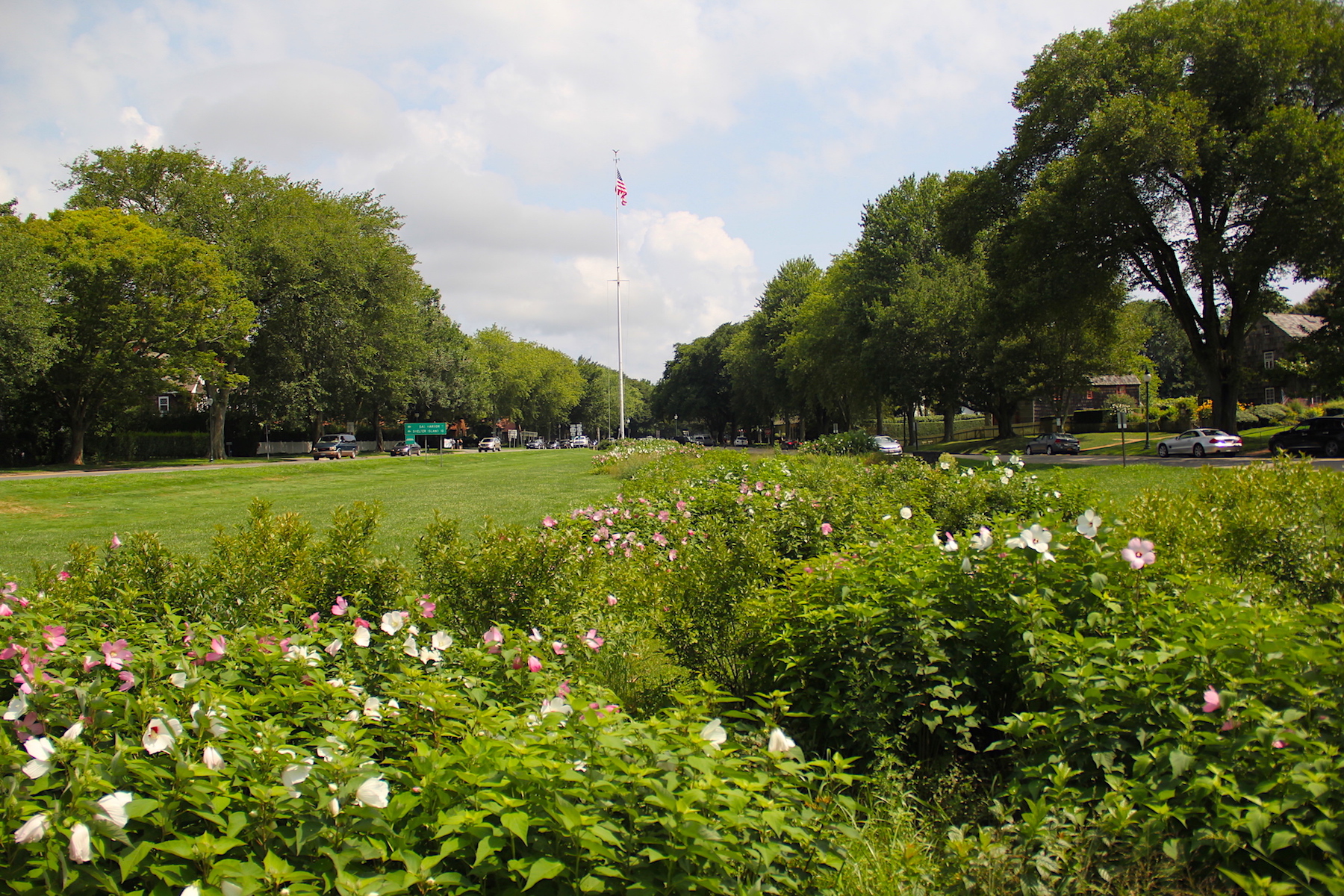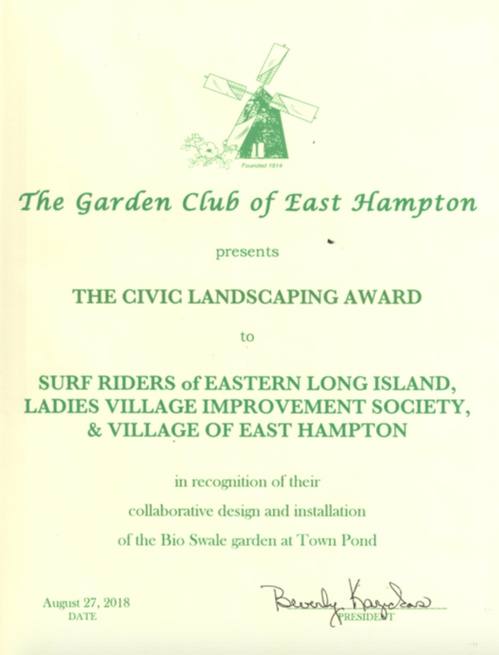
09.25.18
Ocean Friendly Gardens Providing Native Habitats and Preventing Polluted Runoff
By easternliAnybody driving into East Hampton town can't help but notice the liveliness of the East Hampton Village Green. Formerly a mowed patch of grass that frequently flooded, this land metamorphosed into a colorful oasis for dozens of native plants and migratory pollinators.
See the garden in full bloom during Summer 2018:


Since its initial planting in 2017 by Surfrider ELI, Piazza Horticultural, The Ladies Village Improvement Society, and East Hampton Village, the garden has been met with great acceptance within the community.
In August of 2018, The Garden Club of East Hampton awarded its 2018 Civic Landscaping Award to the East Hampton Village Green Ocean Friendly Garden, stating "we acknowledge the creation of this “rain garden” by the joint efforts of Surfrider Eastern Long Island, the Village of East Hampton, and the Ladies Village Improvement Society."

Beyond providing a source of beauty for the community, this landscape transformation has a much greater significance: it protects public health by filtering out pollutants from road runoff before it reaches our nearby ponds, lakes and oceans; pollutants such as fecal bacteria and pathogens that make people sick and nutrients that cause toxic algal blooms in downstream waters.
When water pools up at the Village Green after a heavy rain, it flows south to the Town Pond in East Hampton. The Town Pond is hydrologically connected (underground) to Hook Pond, which meets the ocean through an outfall pipe at Main Beach, one of the most iconic ocean beaches in the country. This Ocean Friendly Garden demonstration is an upstream approach to preventing polluted water from reaching our local beaches and threatening public health.
To see just how well this garden functions in protecting local water quality, Surfrider Foundation Eastern Long Island's Blue Water Task Force has also been monitoring the water quality at the East Hampton Village Green Bioswale and the East Hampton Town Pond since before construction.
After the garden was planted, collecting a sample from the green has proven to be difficult since water only pools up as a result of a very heavy rain: a testament that the garden is serving its purpose.
The Chapter's second Ocean Friendly Garden in Amagansett Square has become a living laboratory for Monarch Butterflies, which rely on milkweeds to lay their eggs.


Although these demonstration gardens were a significant undertaking for Surfrider Foundation Eastern Long Island, there are many best landscaping practices for individual homeowners to make their own yards more Ocean-Friendly.
- In place of chemical fertilizers, apply compost to increase the productivity of your soil.
- Instead of pesticides or herbicides, apply mulch to prevent unwanted weeds to to build healthy, living soil.
- Plant native plants that require little maitnence, while also providing food and habitat for butterflies, birds, and bees.
- Get dirty! Stop using chemical fertilizers and pesticides and pull weeds by hand instead.
- Shape your garden to slow down and soak up rainwater. Leave a natural buffer or slightly raised border around the edge of your yard to prevent runoff from leaving your property and polluting local waterways.
- Direct your gutters into a rain barrel/cistern, or a vegetated area of your yard to allow the water to soak into the ground. This reduces flooding and keeps polluted runoff from reaching the ocean.
- Visit demonstration Ocean Friendly Gardens in your community. View Map of all OFGs here.
If your interested in learning more about Ocean Friendly Gardens, or if your yard follows all Ocean Friendly criteria and you would like an Ocean Friendly Garden Yard Sign, visit Surfrider's Ocean Friendly Gardens page.
